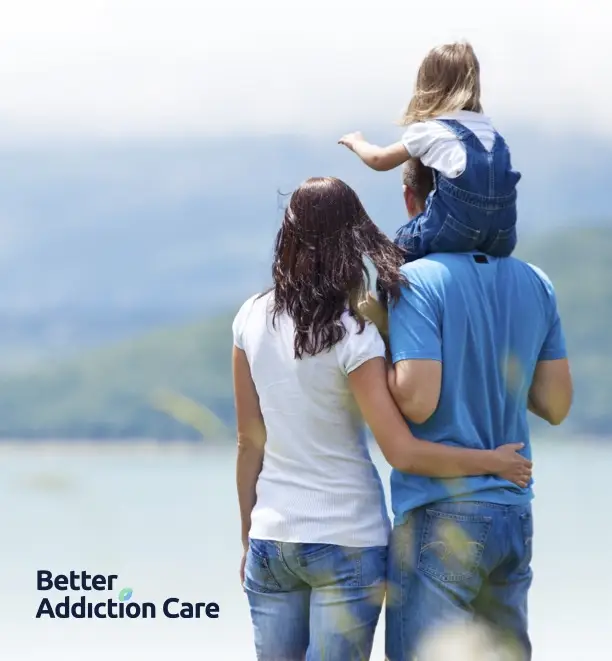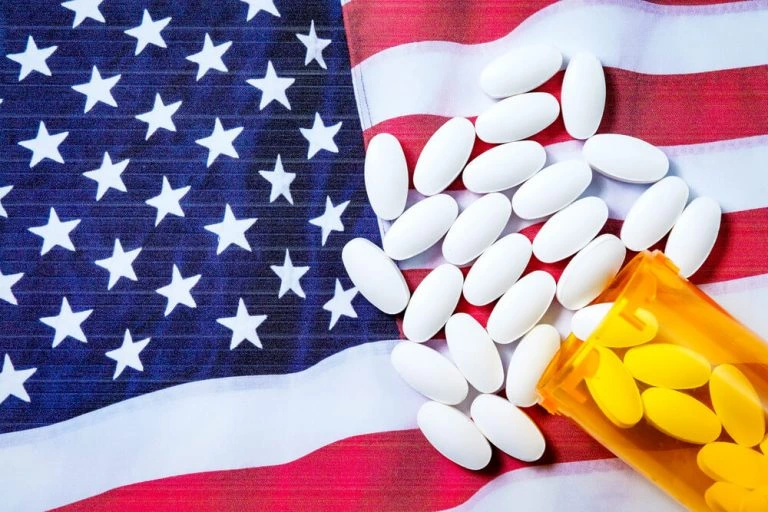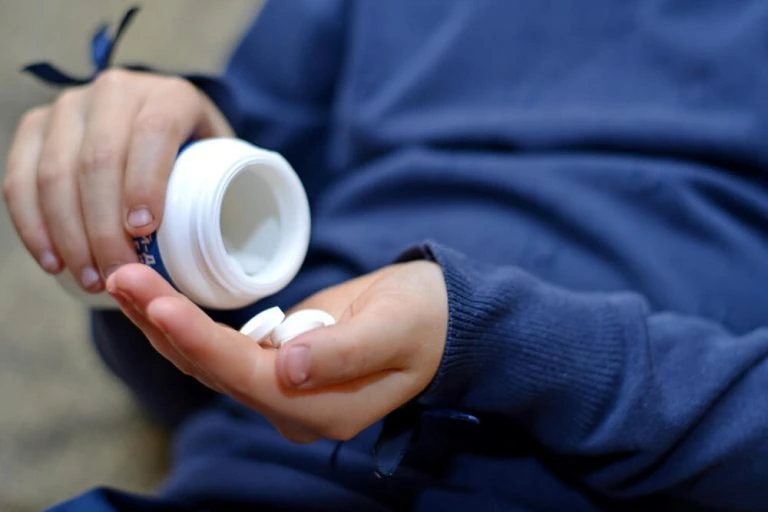Opiates and Opioids
Opiates and opioids are substances derived from the opium poppy plant and used primarily to treat pain. These drugs work by minimizing the intensity of pain signals and changing how the body responds to feelings of pain. Opiates and opioids are safe and highly effective in controlling acute pain brought about by injuries, surgeries, and other chronic conditions like cancer, provided users take them according to the doctor’s prescription and direction. Otherwise, these substances can be dangerous.

Interestingly, what makes opiates and opioids helpful in managing pain is also the reason they can be unsafe. At lower doses, these drugs make users feel sleepy. But when taken in higher doses, these substances can significantly slow down a person’s breathing and heart rate and could eventually lead to death. The pleasurable sensation resulting from taking opioids can also entice users to become addicted to the substance.
The misuse and abuse of opiates and opioids is a serious problem in the United States as it affects public health as well as economic and social welfare. According to the National Institute on Drug Abuse, close to 50,000 people in the country died from opioid-involved overdoses in 2019 alone. More than 10 million people (aged 12 and above) are also misusing these substances, and nearly 2 million people are suffering from opioid use disorder, as revealed by the recent National Survey on Drug Use and Health (NSDUH).
Some opiates and opioids are legally prescribed by healthcare practitioners for managing chronic and severe pain, such as oxycodone, methadone, hydrocodone, codeine, and morphine. However, it is worth noting that these medications are highly restricted because of their high potential for abuse. Other opiates and opioids like heroin are illegal as they have no federally accepted medical purpose and can cause addiction.
If you want to learn more about how opiates and opioids work, read on. This piece will give you information on how these substances work on the body, their short-term and long-term effects, and how they are abused and treated, among others.
A Brief History of Opiates and Opioids
The popularity of opium as an effective pain-reliever and as a “cure-all” for all kinds of diseases spread widely in Asia Minor and different parts of Europe between the tenth and thirteenth centuries. As the drug reached these places, addiction followed. Accounts of massive opium abuse problems in Turkey, Egypt, Germany, England, and China can be found in manuscripts dating as far back as the sixteenth century.
Intending to minimize the harmful effects and addictive potential of opium, German scientist Friedrich Sertürner isolated the active ingredient in opium in 1806. He called the substance morphine after the god of dreams, Morpheus. Morphine, an opiate, is a potent painkiller—ten times stronger than opium in its pure form. After the invention of the hypodermic syringe and needle in the mid-1800s, morphine began to be used for minor surgical procedures, chronic pain, and postoperative discomfort.
Morphine was used heavily to alleviate the pain of gunshot wounds and other injuries during the U.S. Civil War. Although believed to be a safer and less addictive alternative, the use of morphine during the war resulted in probably the first opioid epidemic in America as nearly half a million soldiers became addicted to the drug. Because morphine proved to be similarly harmful as opium, scientists tried developing a safer and non-addictive opiate.
In 1874, English chemist C.R. Alder Wright synthesized the first batch of heroin and pronounced the substance to be a more effective and safer alternative than morphine. But the creation of heroin was just the beginning of many claims for novel opiates. Several morphine-like drugs, including synthetic substitutes, have been manufactured to produce pain-relieving effects without the addictive potential. However, the goal of discovering non-addictive opiates and opioids remains elusive.
Opiates vs. Opioids
Media outlets and several organizations often use opiates and opioids interchangeably because these substances essentially exhibit similar physical and psychological effects, and both have a high potential for abuse. Nonetheless, it is important to note that there are differences between the two.
The word opiate refers to naturally occurring substances extracted from the flowering opium poppy plant. Some of the most common opiates include heroin, morphine, and codeine. Opioid, on the other hand, is a broad term used to describe any drug synthesized from an opiate, producing practically the same effects. Opioids include all natural, synthetic, or semi-synthetic chemicals that bind with opioid receptors in the brain and produce opiate-like reactions. That said, all opiates are opioids, but not all opioids are opiates.
Synthetic opioids are those that are made entirely in the laboratory like fentanyl. This opioid type also includes pain medications available legally by prescription, such as methadone, meperidine (Demerol), tramadol (Ultram), and levorphanol (Levo-Dromoran). Partially synthetic opioids are synthesized in the laboratory from naturally occurring opiates. Heroin, hydrocodone (Lortab, Vicodin), hydromorphone (Dilaudid), and oxycodone (Percocet, OxyContin) are some of the most common semi-synthetic opioids.
How Are Opiates and Opioids Used?
Unlike non-opioid analgesics that are mainly given orally, opiates and opioids painkillers can be used in a variety of ways. Besides smoking and snorting, here are other routes of opioid administration:
- Oral route. Most people use opioids by swallowing tablets or capsules like codeine, hydrocodone, methadone, and meperidine. They also drink oral opioids, such as morphine, hydromorphone, hydrocodone, and oxycodone. Others consume opioid analgesics after mixing them with soda and flavorings. Users who take liquid preparations of opiates and opioids will feel their effects more quickly than those who take opioids in tablets, capsules, or other solid forms.
- Sublingual and buccal administration. Those who use opiates and opioids can also place them under the tongue or between the teeth and the mucous membranes of the cheek for quick absorption and fast action. Some of the most common opioid drugs given through these routes include morphine, oxycodone, hydromorphone, and fentanyl.
- Intravenous route. This type of administration involves injecting the drug directly into the vein, where it immediately enters the bloodstream and circulates in the various parts of the body. As such, the intravenous route provides the fastest effects. Almost all opiates and opioids can be injected into the vein.
- Intramuscular administration. Morphine, codeine, and oxycodone are examples of opiates and opioids commonly injected into a muscle. However, this route of administration is not recommended for managing pain because intramuscular injections are usually painful, and the effects are often inconsistent and unpredictable.
- Subcutaneous route. Opioid drugs, such as morphine, hydromorphone, sufentanil, and fentanyl, can also be absorbed beneath the skin into the fat layer under the dermis.
- Rectal administration. Opioids, like oxycodone, codeine, morphine, hydromorphone, and methadone, are also available in suppositories. That means users can administer them rectally.
- Transdermal route. Some opioids come in skin patches like fentanyl and buprenorphine. By using these patches, the drug is absorbed through the skin’s surface, providing continuous effects without needles or pumps.
How Do Opiates and Opioids Work in the Human Body?
The body produces neurotransmitters or brain chemicals, like endorphins, that act on opioid receptors in the brain to provide relief from pain and feelings of pleasure. Opiates and opioids work similarly as they try to mimic the effects of these naturally occurring pain-relieving chemicals. Opioid drugs also bind to the opioid receptors in the brain, spinal cord, and other locations in the body to block the perception of pain and cause feelings of calm and happiness.
Because both natural brain chemicals and opioid drugs activate opioid receptors on the surface of the nerve cells, scientists always thought that both molecules interact in the same way with opioid receptors. However, a recent study published in the neuroscience journal Neuron found that morphine and other synthetic opioids have a different wave of activity.
For one, these drugs activate opioid receptors in a location wherein natural brain chemicals are unable to produce any activation at all. They also crossed cell membranes without attaching to receptors or entering endosomes and traveled directly to the Golgi apparatus within seconds. The different and quick ways opioid drugs interact with the receptors may help explain why they are addictive and produce many undesirable side effects.
What Are the Immediate and Long-Term Effects of Opiates and Opioids?
Opiates and opioids provide temporary relief from pain. They also produce feelings of intense happiness (euphoria), drowsiness, nausea, vomiting, headaches, and impotence in men. Users can also suffer from dizziness and confusion, which can lead to falls and other accidents. They can also experience difficulty breathing that can cause or worsen sleep apnea.
Continual use of opiates and opioids can weaken the immune system, damage the liver, cause infertility among women, and other adverse effects on the different body systems. Even when prescribed to treat pain, long-term use of these drugs can increase the risk of overdose and other significant issues, such as fractures, intestinal blockages, sedation, physical dependence, and substance use disorder.
Signs of Opiate and Opioid Use Disorder
Unlike other types of substance use disorder that begin with the experimental use of a recreational drug in social happenings, addiction to opiates or opioids often starts with exposure to prescribed medications for pain relief. As the user becomes hooked on the positive effects of these drugs, they will continue using them despite all the unpleasant consequences.
If you think that a loved one is misusing opiates and opioids, you may want to check their behavior against the eleven diagnostic criteria for substance use disorder provided by the Diagnostic and Statistical Manual of Mental Disorders, 5th Edition (DSM-V). Based on years of intensive research, these criteria indicate the severity of the disorder depending on how many symptoms are present.
If you notice at least two of the problematic patterns below, this could mean that the person is suffering from a mild opiate or opioid use disorder. Four or five symptoms suggest a moderate disorder, while six or more signs imply a severe substance use disorder.
- Using opiates and opioids in larger amounts or for a longer period than initially intended
- Persistent desire to reduce or stop the use of opiates and opioids, but not being able to
- Taking a great deal of time in acquiring and using opiates and opioids or recovering from use
- Feeling an intense desire to use opiates and opioids
- Failing to manage personal, domestic, and work commitments because of substance use
- Continuing to use opiates and opioids, even if the habit leads to relationship issues
- Giving up essential activities in favor of substance use
- Continuing to use opiates and opioids, even if their use puts the person in danger
- Unceasing substance use, even if the habit leads to or worsens physical or psychological problems
- Needing more of the opiate or opioid to achieve the desired effects
- Experiencing opiate or opioid withdrawal symptoms, such as sweating, nausea, diarrhea, chills, shaking, pain, fatigue, insomnia, and depression, when trying to stop substance use
Besides the criteria described above, there are other signs that may point to opioid abuse. Some of the behavioral or psychological changes that suggest opiate and opioid abuse include the following:
- Physical agitation
- Poor decision making
- Mood swings
- Irritability
- Anxiety attacks
- Reduced motivation
Rehab and Treatment for Opiate and Opioid Use Disorder
Every addiction experience is unique, which is why there is no single foolproof treatment that will work for everyone. The rehab program should be tailored to the needs of the person in recovery and assessed regularly to fit their changing needs. In general, treatment for opiate and opioid use disorder includes both medical and behavioral approaches.
There are currently three federally approved medications to treat opioid dependence: buprenorphine, methadone, and naltrexone. These drugs are safe and effective in managing withdrawal symptoms, preventing relapse, and controlling cravings when taken as prescribed. Here are more details about these medications:
- Buprenorphine. This drug produces similar but weaker opioid-like effects, such as euphoria and respiratory depression. Buprenorphine contains pharmacological properties that are effective in reducing the withdrawal symptoms of opioid use disorder and cravings. This medication also diminishes the potential for misuse and overdose.
- Methadone. This medication is a long-acting full opioid antagonist that helps manage unpleasant withdrawal symptoms, reduce cravings, and diminish the effects of opiates and opioids. By taking methadone, the person with opioid addiction can readily achieve long-term abstinence and a productive life.
- Naltrexone. Unlike buprenorphine and methadone, naltrexone does not help reduce cravings or manage withdrawal symptoms. Its primary purpose is to prevent relapse. This medication works by blocking the euphoric and sedative effects of opioids, such as heroin, morphine, and codeine.
It is essential to point out that the medications above are not standalone treatments. These drugs should be prescribed as a part of a comprehensive rehab program that includes counseling and psychosocial support. After all, a whole-person treatment approach is the ideal method to help the person in recovery.
The drugs will help deal with the physiological effects of abusing opiates and opioids, while behavioral treatment will focus on the user’s mental and emotional needs. Behavioral approaches, such as individual counseling, family counseling, and cognitive behavioral therapy, provide numerous benefits. They can help the person realize the root cause of their addiction, learn healthy coping skills, and deal with damaged relationships, among others.
Get the Help You Need
People who misuse opiates and opioids are at risk of untimely death and severe medical conditions. Addiction can also ruin their lives, relationships, and everything they care about. Without a doubt, stopping the use of such substances is the only way to avoid all these undesirable consequences from happening. Otherwise, the continued and prolonged drug use can eventually lead to devastating results and irreversible damage.
Fortunately, all is not lost if you or someone you love suffers from opiate and opioid use disorder since you can always seek professional help to bring your life back on track. Make the process of searching for the best addiction facilities easier with the help of Better Addiction Care (BAC), a leading information service provider that connects you to a national network of top treatment providers. We at BAC understand the challenge of deciding where to go for the best rehab care. That is why we offer a free advisory service and a comprehensive listing of rehab facilities to assist people struggling with addiction. Call us today or browse our directory, so you can readily find a reputable treatment facility near you.






